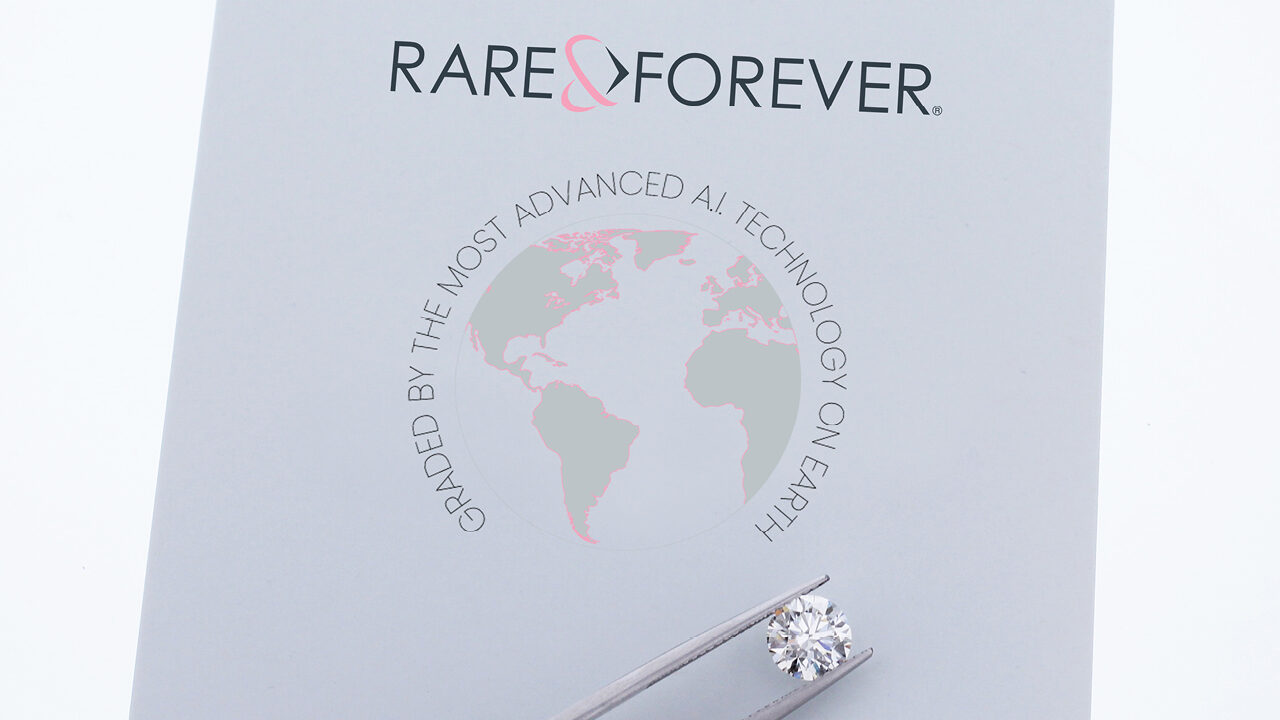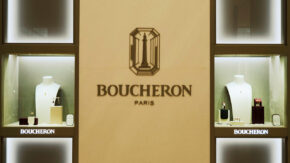Certificates by reputable labs are vital for building consumer confidence in diamond purchases.
Some diamond certifications provide assurances to governments and the trade, like those of the Kimberley Process (KP), which commits to removing conflict diamonds from the supply chain. Others — such as the documents from the Responsible Jewellery Council (RJC) — confer ethical and sustainability credentials. Reports issued by gem labs, on the other hand, include important information about a diamond’s characteristics so consumers can make informed decisions.
In the 1940s and 50s, the Gemological Institute of America (GIA) transformed the way diamonds were traded by creating a common language for diamonds. The international Diamond Grading System was developed by the GIA in 1953, along with the 4Cs. This system became a standard way in which reputable diamond sellers and jewelers could compare and evaluate the quality of diamonds.
The industry has widely adopted these innovations. Today, virtually every diamond is described using the language the GIA developed. The GIA Diamond Grading Report contains scientifically determined information on shape, color, clarity, cut, carat weight, proportions and finish. It also identifies any
known treatments.
The industry’s journey toward responsible sourcing started in 2000 with the KP and in 2003 with the RJC, which is an ISEAL Alliance accredited member — a global membership organization that accredits
sustainability standards.
TRUST AND TRANSPARENCY
Certificates are needed to boost consumer confidence, but the body issuing the grading report needs to
operate according to strict laboratory standards and be transparent. “This means that there has to be an absolute disconnect between the person or company submitting the stone for grading and the person doing the evaluation, with ideally the one not knowing who the other is,” says Gaetano Cavalieri, president of the World Jewellery Confederation (CIBJO).
The grader must use standard nomenclature and benchmarks, ideally as specified in the CIBJO Diamond Blue Book or International Organization for Standardization’s ISO 24016:2020 classifications for polished diamonds, he adds.
Laboratories that maintain strict standards and internal controls enhance the industry’s reputation.
“Those who do not and, even worse, serve the specific marketing interests of an interested trader —
inflating values or disregarding or concealing relevant information about a stone — not only are committing acts of deliberate deception, but are undermining the reputation of diamonds,” Cavalieri says.
Today, it is important to identify whether a diamond is natural or lab-grown. If it is synthetic, CIBJO insists that the certificate not be called a grading report, because that implies there is an element of randomness and rarity.
“They should ideally be called Laboratory Grown Diamond Specification Reports, which essentially list the properties, characteristics and other important information relating to a manufactured product,” says Cavalieri.
Certificates foster trust and transparency, and this needs to be conveyed to the consumer, adds Edward Asscher, president of the World Diamond Council (WDC).
“Consumer desire in the jewelry industry is underpinned by trust and the consumer landscape is quickly changing. Consumers are increasingly interested in knowing not only where their jewelry came from, but that it also did good on its journey to them,” Asscher explains.
Certification challenges are not limited to the diamond industry; they cut across all business sectors.
“There are many certification schemes out there, some with the correct credentials and others without,” Asscher continues. “This means that there is huge risk of ‘greenwashing’ [creating a false impression that products are environmentally friendly], as some operate in an unregulated manner and are commercially driven. For the uninformed consumer and sometimes even more for members of industry, it’s often hard to identify which are the credible ones.”
REASSURING CUSTOMERS
In high-value jewelry auctions, a private client who is buying a diamond is not necessarily an expert, so it is reassuring to know that the stone has been checked by one, says Olivier Wagner, senior director at Sotheby’s.
“It is the same in the art market for a painting if you have a certificate from the relevant authority,” Wagner points out. “Today, with the majority of our auctions being held online, it is even more important to have a certificate if you cannot see the piece firsthand. Today, a buyer will always favor a stone with a certificate as he knows exactly what he is buying.”
Gemological laboratories provide grading services to meet customers’ expectations that higher-value diamonds will be accompanied by a report covering the 4Cs, says Iris Van der Veken, executive director
of the RJC.
“Consumers who purchase a higher-value diamond without a grading report are taking a risk that the diamond may not meet the sellers’ description,” Van der Veken says. “There is an increasing risk that
laboratory-grown diamonds [LGDs] are issued a fraudulent certificate purporting that the diamond is
natural,” Van der Veken notes.
“As LGD manufacturing increases and LGD costs decrease, the risk of LGDs being sold as natural diamonds becomes more serious. Therefore, the jewelry industry must be more vigilant and take robust measures to ensure that all jewelry is accurately and truthfully described.
“If jewelry consumers lose trust in our products — especially diamonds — the whole industry is threatened. And that threat affects the supply chain and the millions of people who earn their living from mining, cutting and polishing, and jewelry manufacturing.”




